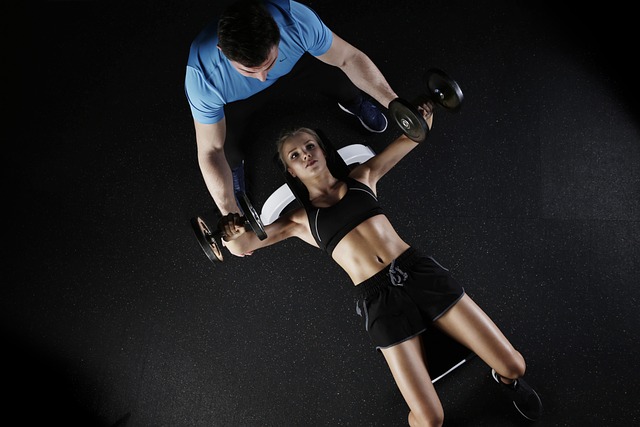Chrono-Fitness: Aligning Exercise with Your Body Clock
In the ever-evolving world of fitness, a groundbreaking approach is gaining traction among health enthusiasts and researchers alike. Chrono-fitness, the practice of synchronizing exercise routines with our internal body clocks, is revolutionizing how we think about optimal workout timing. This innovative concept draws from the field of chronobiology, which studies the natural physiological rhythms of living organisms. By aligning physical activity with these innate cycles, chrono-fitness promises to enhance exercise efficiency, improve performance, and boost overall well-being. As we delve into this fascinating intersection of biology and exercise science, we'll explore how this approach could reshape our daily fitness routines and potentially unlock new levels of physical potential.

Research has shown that different bodily functions peak at specific times. For instance, muscle strength tends to reach its zenith in the late afternoon, while flexibility is often at its best in the early evening. Core body temperature, which plays a crucial role in exercise performance, typically peaks in the late afternoon as well. By understanding these patterns, chrono-fitness advocates argue that we can strategically time our workouts to capitalize on these natural peaks in physical capability.
Optimizing Workout Timing
The cornerstone of chrono-fitness lies in aligning specific types of exercise with the body’s natural rhythms. Early morning workouts, for example, may be ideal for fat burning due to elevated cortisol levels and depleted glycogen stores upon waking. This makes it an optimal time for steady-state cardio or low-intensity exercises.
As the day progresses, the body becomes more primed for high-intensity activities. Strength training and power-based exercises are often recommended for the late afternoon or early evening when reaction times are quicker, and pain tolerance is higher. This timing coincides with the peak in core body temperature, which can contribute to improved muscle performance and reduced risk of injury.
For those seeking to improve flexibility or practice yoga, the evening hours might be most beneficial. The body is typically at its most limber during this time, and the relaxing nature of these activities can help prepare the mind and body for restful sleep.
Personalization and Adaptation
While general guidelines exist, chrono-fitness emphasizes the importance of personalization. Each individual’s circadian rhythm can vary slightly, influenced by factors such as genetics, age, and lifestyle. Chronotypes, often described as “early birds” or “night owls,” play a significant role in determining one’s optimal exercise schedule.
Proponents of chrono-fitness encourage individuals to listen to their bodies and experiment with different workout times to find what works best for them. This may involve keeping a journal to track energy levels, performance metrics, and overall feelings of well-being at different exercise times.
Impact on Recovery and Performance
One of the most compelling aspects of chrono-fitness is its potential impact on recovery and overall performance. By aligning workouts with the body’s natural rhythms, practitioners may experience reduced muscle soreness, improved sleep quality, and enhanced adaptation to training stimuli.
Research has shown that the timing of protein intake in relation to exercise can affect muscle protein synthesis. Chrono-fitness extends this concept by suggesting that the body may be more receptive to certain nutrients at specific times of the day, potentially optimizing the benefits of post-workout nutrition.
Challenges and Considerations
While the principles of chrono-fitness are promising, implementing them can present challenges in our modern, schedule-driven world. Work commitments, family responsibilities, and other obligations often dictate when we can exercise, sometimes forcing us to work out at less than ideal times.
Additionally, factors such as meal timing, caffeine intake, and exposure to artificial light can disrupt our natural circadian rhythms, potentially affecting the efficacy of chrono-fitness strategies. Addressing these lifestyle factors holistically is crucial for those looking to fully embrace this approach.
The Future of Chrono-Fitness
As research in chronobiology and exercise science continues to advance, we can expect more refined and personalized chrono-fitness recommendations. Wearable technology and AI-driven apps are already beginning to incorporate circadian data into their fitness tracking capabilities, offering users insights into their optimal workout windows.
The potential applications of chrono-fitness extend beyond individual fitness enthusiasts. Professional athletes and sports teams are exploring how to leverage these principles to gain a competitive edge, timing training sessions and competitions to align with peak performance windows.
In conclusion, chrono-fitness represents a paradigm shift in how we approach exercise and physical activity. By harmonizing our workouts with our body’s natural rhythms, we may unlock new levels of performance, recovery, and overall well-being. As this field continues to evolve, it promises to offer a more nuanced and personalized approach to fitness, one that respects and works in concert with our innate biological processes. Whether you’re an elite athlete or a casual gym-goer, understanding and applying the principles of chrono-fitness could be the key to optimizing your exercise routine and achieving your fitness goals more effectively.





